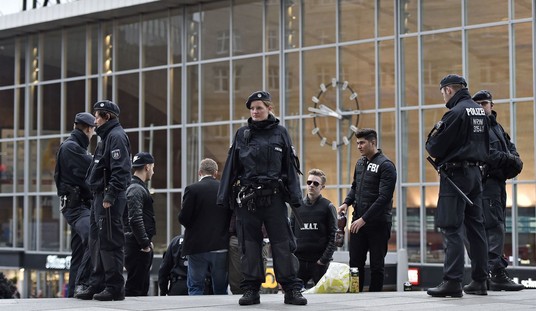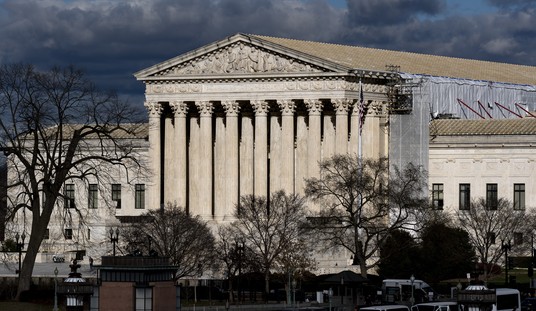I’m not convinced there’s causation here. But the correlation sure is interesting.
Kinsa is a company that sells “smart thermometers” which it uses to collect data on how many of its customers are registering fevers at a given moment. The company can’t tell which virus is causing the fever, of course, only that the person using the thermometer has a temperature due to some illness or another. Over the past 15 months there’s been a prime suspect for what that illness is likely to be, especially with cases of the flu having all but vanished temporarily in the U.S. But now that many millions of Americans are vaccinated against COVID the case is no longer so clear-cut. How many people getting sick enough to have a fever these days are infected with SARS-CoV-2 versus some more common virus?
Kinsa looked at its thermometer data for Texas beginning on March 10, when Greg Abbott lifted the state’s mask mandate. We already know from other data that COVID cases continued to decline in the state once the mandate was lifted thanks to mass vaccination. The much-feared outbreak after Abbott let Texans take off their masks didn’t happen.
What we didn’t know is that fevers did begin to rise after March 10. Which suggests that masks were in fact preventing some infections, at least by viruses others than SARS-CoV-2.
Aggregated insights from Kinsa’s network of smart thermometers show that beginning March 21, the overall illness signal, Percent Ill— which is a measure of how many people have an illness that causes a fever above 100˚ F— began to rally. Starting at just under 0.4% of the population being ill in early [March], the metric peaked at 1.5% on April 14…
Though initially alarming to see so much illness, this is simply a return to normal. In the absence of face masks, social distancing and limited capacities, Percent Ill usually is around 2-5% in this time of year, so a peak of 1.5% can still be considered relatively low historically.
Respiratory Syncytial Virus (RSV) is a common respiratory germ. Check this out, particularly the timeline on when cases began to rise:

There’s an ominous wrinkle. Because Americans’ immune systems haven’t been exposed to common viruses in awhile, we may be more vulnerable to infection by them — and to more severe illness — than we have been in the past. A few days ago WaPo reported on a surge among children, especially young children, getting sick from viruses like RSV lately even though the season for germs like that normally would have already passed. Some kids are ending up in the hospital. Their bodies haven’t had the usual “practice” at learning how to fend off RSV, the flu, etc, because masks and social distancing have limited their encounters with those bugs.
Last week, the Centers for Disease Control and Prevention issued an advisory warning that respiratory syncytial virus, known as RSV, has been detected with increasing frequency since March in 10 Southern states, plus Texas, Oklahoma and New Mexico. RSV is the most common cause of bronchial infections and pneumonia in children under age 1, with a season that typically runs roughly from November to early spring…
“It’s very unusual to see this volume of sick kids during the summer,” said Sally Goza, immediate past president of the American Academy of Pediatrics. “This is the time of year we normally are doing checkups for camp.”…
[A] paper, awaiting publication by the AAP’s journal, says that 295 children tested positive for RSV at Maimonides from March through early May, with a median age of 6 months. Strikingly, just over half of them required intensive care. Compared with the most recent pre-pandemic RSV season, the patients this spring have been more prone to need treatment in intensive care units and have tended to remain in the hospital about a day longer.
“The more seasons you have under your belt, the better your immune system is in fighting these things off,” said one doctor, explaining the wave. The risk of kids (and adults) getting unusually sick this coming winter from common viruses like the flu will create pressure on officials to reinstate mask rules — or, if they don’t, will surely lead to lots more voluntary masking than we saw before the pandemic. But that risks a vicious circle in which people’s immune systems grow weaker against common bugs, they try to compensate with masking or social distancing, and then their immune systems grow even weaker due to a second season of not encountering those bugs.
Last winter we had a ton of COVID in the United States and hardly a case of flu. Next winter the scales should be more balanced. We may end up with a “twindemic” after all.
Anyway, does the Kinsa data mean we can now safely conclude that mask mandates did work to limit infection? Not exactly. A new study suggests that masks work to limit COVID if they’re worn by a large enough share of the population…
How well do masks work against COVID transmission, at the population level?
In our new preprint, we find that an entire population wearing masks is linked to a reduction in R of 24.6% [6%, 43%].https://t.co/o2zsAqxXci pic.twitter.com/crO6ucFPgU
— gavin leech mostly (@g_leech_) June 19, 2021
…but mask mandates do not:
Ways mandates could fail to correlate with wearing despite a causal impact on it:
they could come late, following voluntary masking (South Korea @ 94% wearing) – or work very slowly (Czechia). We observe noncompliance (disobeying mandate) in almost none of our 56 countries.
— gavin leech mostly (@g_leech_) June 19, 2021
That’s not the first study to show that mandates don’t matter. And that’s why I’m iffy on whether Abbott lifting the mandate on March 10 actually led to the surge in illness caused by viruses like RSV, Kinsa’s data notwithstanding, or if it was going to happen regardless as Texans began discarding their masks voluntarily. They were probably emboldened to start socializing again without masks by the increasing number of vaccinations and declining case numbers in their state, not Abbott’s ending of the mandate. In which case, the big RSV spike in Texas and elsewhere was going to happen regardless of the state’s policy. “It may seem counter-intuitive, but the road back to normal is paved with illness,” Kinsa concludes. Indeed.







Join the conversation as a VIP Member